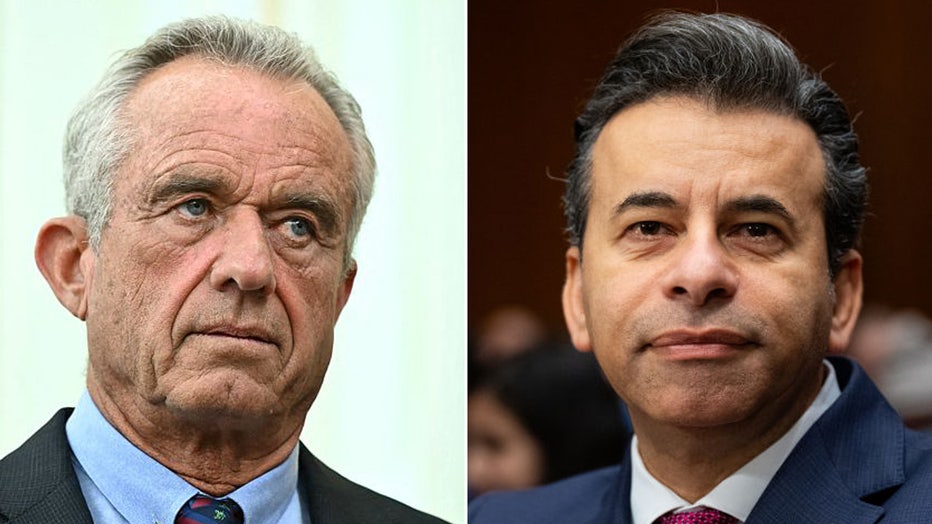FDA aims to eliminate petroleum-based synthetic dyes in food by end of 2026
RFK Jr. unveils new food dye bans
Health Secretary Robert F. Kennedy Jr. on Tuesday announced his plan to get rid of all artificial dyes from food and drinks by the end of next year.
WASHINGTON - The U.S. Health and Human Services and Food and Drug Administration announced plans on Tuesday to phase out more petroleum-based synthetic dyes from the nation’s food supply by the end of 2026.
U.S. health officials outlined their plans to phase out eight petroleum-based artificial colors from the nation's food supply, triggering an overhaul of scores of brightly-hued products on American store shelves.
Health Secretary Robert F. Kennedy Jr. and Food and Drug Administration Commissioner Marty Makary spelled out a regulatory path for removing the color additives, a process that typically requires public notice and agency review.

FILE - Side-by-side image of Health Secretary Robert F. Kennedy Jr. and Food and Drug Administration Commissioner Marty Makary. (Getty Images)
The FDA will take steps to eliminate the synthetic dyes by the end of 2026, Makary said at a news conference. The agency will establish a standard and timeline for industry to switch to natural alternatives, revoke authorization for dyes not in production within coming weeks and take steps to remove remaining dyes on the market.
Makary said that removing artificial dyes would boost children's health.
"For the last 50 years we have been running one of the largest uncontrolled scientific experiments in the world on our nation’s children without their consent," Makary said.
What are synthetic dyes?
The backstory:
Over the decades, there has been pushback and government regulation over just how food and drink have been colored, most recently with the decision in February from the FDA to ban Red 3 from foods and oral-ingested drugs because of concerns over a possible cancer risk.
Synthetic dyes are petroleum-based chemicals that don’t occur in nature. They’re widely used in foods to "enhance the visual appeal" of products, according to Sensient Food Colors, a St. Louis-based supplier of food colors and flavorings.
Nine dyes, including Red 3, have been allowed in U.S. food. The other common color additives in food are Blue 1, Blue 2, Green 3, Red 40, Yellow 5 and Yellow 6. Two permitted colors are used more rarely: Citrus Red 2 and Orange B.
The FDA certifies synthetic color additives and regulates their use.
With the FDA’s recent order on Red 3, manufacturers have until January 2027 to remove the dye from their products. Makers of ingested drugs like cough syrups have until January 2028.
States already limiting food dyes
Dig deeper:
Some U.S. states, such as California and West Virginia, recently enacted laws that ban artificial colors and other additives from school meals, and in some cases, the broader food supply.
The dyes Kennedy wants to remove are used widely in U.S. foods. In Canada and Europe — where artificial colors are required to carry warning labels — manufacturers use natural substitutes.
The Source: Information for this article was gathered from The Associated Press, an announcement from the HHS and previous reporting by LiveNOW from FOX. This story was reported from Los Angeles.

